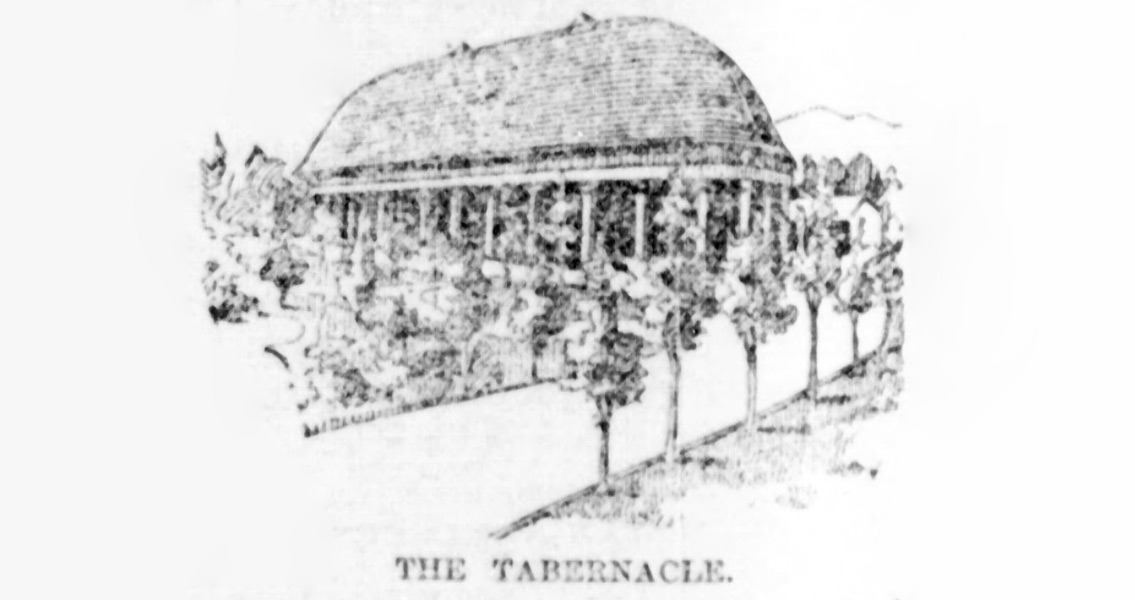<![CDATA[On the 10th February 1846 Brigham Young, the leader of the Church of Latter-Day Saints, led some 1,600 Mormons on the first steps of a major Western migration. Embarking in sub-zero temperatures across the frozen Mississippi, the journey would eventually come to an end several years later in the Valley of the Great Salt Lake, in Utah. The Mormon Religion had been founded by Joseph Smith in Fayette, New York, in April 1830. Smith, considered a prophet by followers of the religion, claimed to have been influenced by divine visions from his youth, and in particular one of an angel who revealed to him a set of buried gold plates. These gold plates were transcribed by Smith, and would become the Book of Mormon, the key text of the religion. From its founding in 1830 the religion quickly grew to develop a large following in the United States. Growing popularity was matched with growing hostility towards the newly founded religion, however. The first nine years of the Church of Latter-Day Saints saw its followers faced with growing persecution, in large part due to its unusual practices which allow polygamy, as well as Smith's claim to be a prophet from God - something which provoked the US' traditional, Christian population. Early on Mormons were forced into westward migration away from their New York origin, first to Ohio, then to Missouri, and in 1839 to Nauvoo, Illinois. After the early upheavals the Mormons settled, and attempted to establish a spiritual colony in Nauvoo. Although it initially seemed a viable location to establish the religion, conflicts with the local, non-Mormon community soon started to arise. In 1844 Smith and his brother were murdered by an angry mob. The slaying of the religion's leader was swiftly followed by attacks on Mormon homes in Nauvoo, and threats being made against the colony's citizens. Brigham Young, Smith's successor, began to plan for a Mormon future outside of Nauvoo, looking to once again embark on a migration west. In just one month in 1845, two hundred Mormon homes had been torched by angry mobs, in an attempt to force out the followers of the Church of Latter-Day Saints. This continuing brutality and violence led to Young's conclusion that the now 11,000 strong population of Nauvoo needed to find a home outside of the United States. The first group of migrants were intended as a kind of reconnaissance, tasked with finding a location to lay the foundations of a new Mormon colony. After taking temporary refuge at Sugar Grove Iowa, Brigham decided that the first major stopping point would be at a location on the Missouri River, opposite Council Bluffs. By Autumn 1846 some 12,000 Mormons had made the journey to the Missouri River, establishing a temporary residence known as the Winter Quarters. Continuing the westward migration, Young eventually sighted the Great Salt Lake in what is modern day Utah. From 1847 Mormons gradually made the passage through the still uncharted West, gradually establishing a new civilisation around the Great Salt Lake. By the time of Young's death in 1877 around 100,000 people were living in the area of the lake's basin, the majority of them Mormons. When the Mormon's first discovered the Great Salk Lake basin it was an isolated part of Mexican territory, far away from the influence of any government or hostile group. It is a sign of the rapid expansion of the United States in this period that this situation was so brief. In May 1846 the United States had declared war with Mexico. By 1848 the Great Salt Lake was a US territory, and the construction of the Transcontinental railroad had started in an attempt to open up the 'Far West' of North America. The Mormon migration is a fascinating story in the history of North America, providing an intriguing microcosm of trends in American history in this period. European migration to North America had in large part been motivated by a desire to live in the 'New World' - a land of opportunity with the chance to create a new life separate from European traditions. The Mormon migration was a continuation of this desire to set out and establish a new civilisation in fertile, uncharted lands. Its ultimate inability to escape the Western expansion of the United States however, reveals the startling speed with which the USA came to dominate much of North America. ]]>
The Start of the Great Mormon Migration
